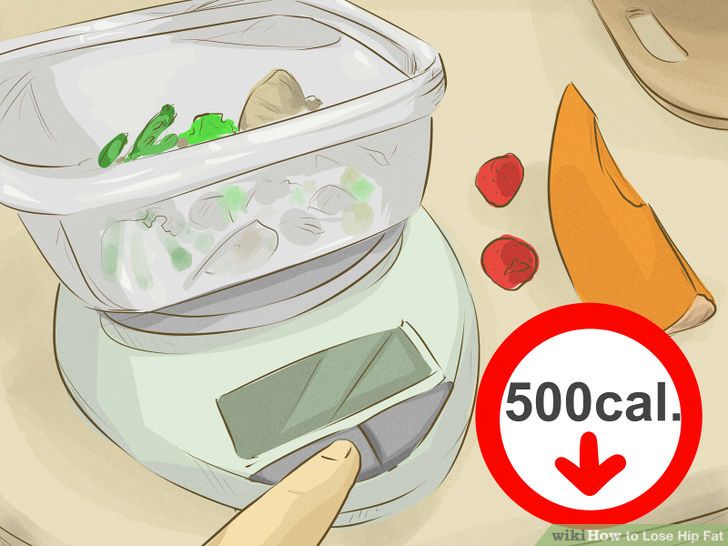How to Lose Hip Fat
1 Keep a food journal for a week.
Continue eating in a normal manner. You can use this journal as a baseline for changing your diet.
A food journal can let you see into your diet and give you clues about things you can change to help result in weight loss.
Take note of portion sizes, snacking, liquid calories or higher fat foods you typically eat. Star these items or make a list to help you get started with your diet plan.
Continue to keep your food journal when you’re trying to lose weight. Studies show that those who stick to their food journals are more successful with weight loss long-term.
2 Reduce your caloric intake by 500 calories daily.
By reducing the amount you are eating, you can signal to your body to start using its stored fat for energy (including the fat stored in your hips).
In order to lose weight and reduce excess body fat in your entire body and in your hips, you’ll need to cut calories. Reduced caloric intake overtime will result in weight loss.
Cutting about 500 calories daily generally results in about a one to two pound weight loss each week. Health professionals considered this safe and healthy weight loss.
Use your food journal to help you see what types of foods you can cut to result in a 500 calorie deficit.
3 Follow appropriate portion sizes.
Following appropriate portion sizes in each of your meals will help you manage your calories and lose weight.
To help you measure portion sizes appropriately, consider buying a food scale or measuring cups.
It’s ideal to measure each meal and snack to make sure you’re staying on track. Eyeballing portions can lead to over estimating portion sizes and underestimating your total caloric intake.
Measure foods to the following sizes: 3 to 4 oz (80 to 120 grams) of protein foods (or about the size of a deck of cards), 1 oz of grains or about 1/2 cup (125 ml), one cup (250 ml) vegetables or two cups (500 ml) of leafy greens and 1/2 cup (125 ml) of chopped fruit or one small piece.[4][5][6][7]
Include 1 serving of protein and 2 servings of a fruit or vegetable at each meal. It’s recommended to consume about two to three servings of grains throughout the day.
4 Choose lower calorie foods.
Another item to focus on to help you lose weight in addition to watching calories and portion sizes is choosing lower calorie foods.
Foods that are portion controlled and lower in calorie are the best choice when it comes to weight loss.
Choose low-calorie and lean protein foods like: poultry, eggs, low-fat dairy products, pork, seafood, legumes and tofu.
Choose 100% whole grains without seasonings or sauces. Whole grains are more nutritious as they have higher amounts of fiber and other nutrients. Purchase grains that do not contain a seasoning packet or a sauce to minimize calories.
Most fruits and vegetables are naturally low in calories. Be careful if you’re purchasing canned or frozen items. Make sure they do not contain added seasonings, sauces or added sugars
5 Limit liquid calories.
Many times liquid calories are responsible for a large part of the excess calories in your diet. In addition, cutting these out completely can really help you lose weight.
Liquid calories are found in a variety of beverages. Limiting or completely avoiding these types of drinks is the best idea to help support your weight loss.
Limit drinks like: regular soda, full fat milk, juices and juice cocktails, alcohol, sweet tea, sweetened coffee drinks, sports drinks, energy drinks and hot chocolate.
Although some drinks contain no calories, they should be limited due to the high amounts of artificial sweeteners and other additives. Limit things like: diet sodas, diet energy drinks and diet sports drinks.
Fill up on clear, hydrating fluids like: water, flavored water, unsweetened decaf coffee and decaf unsweetened tea. Aim for a minimum of eight 8 ounce glasses daily, but you may even need up to 13 glasses daily.

